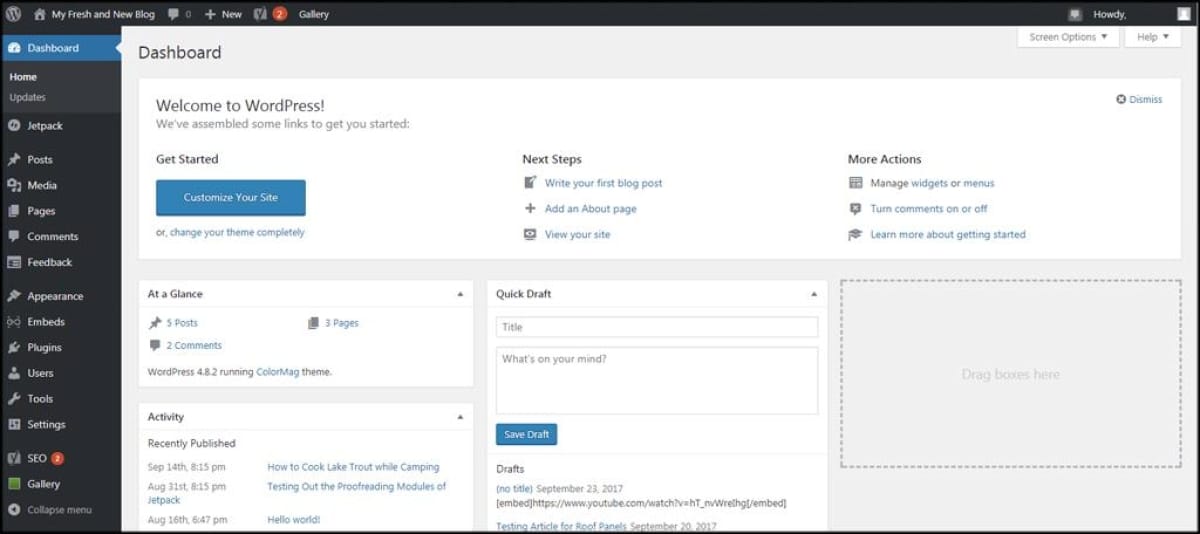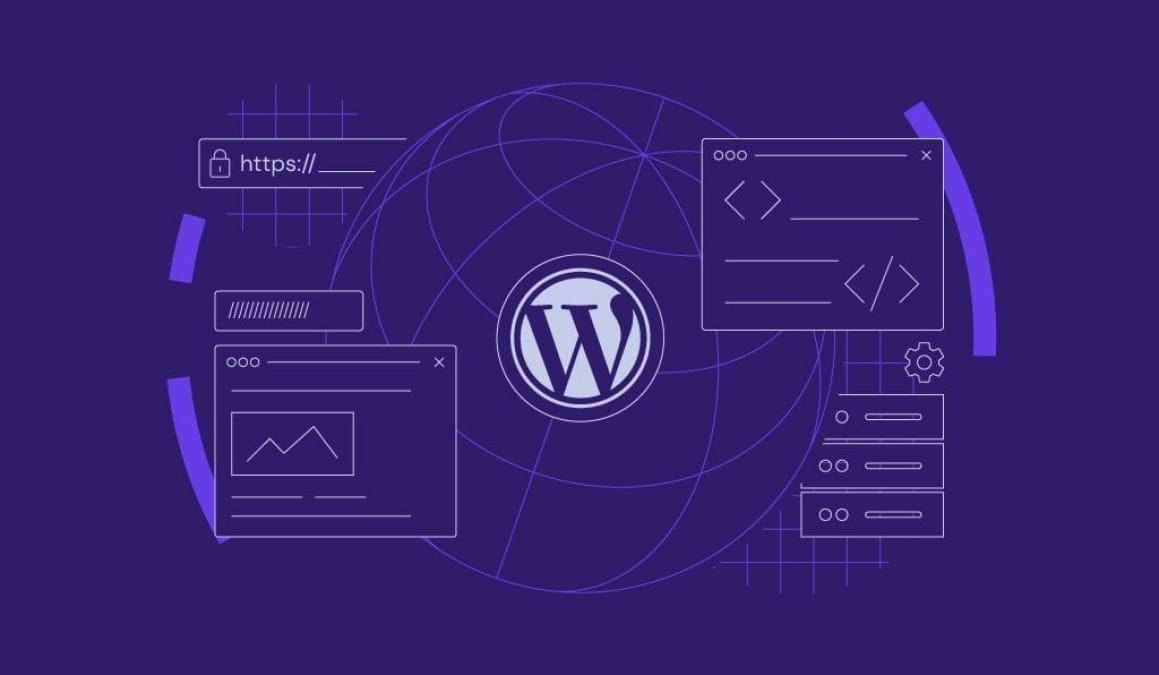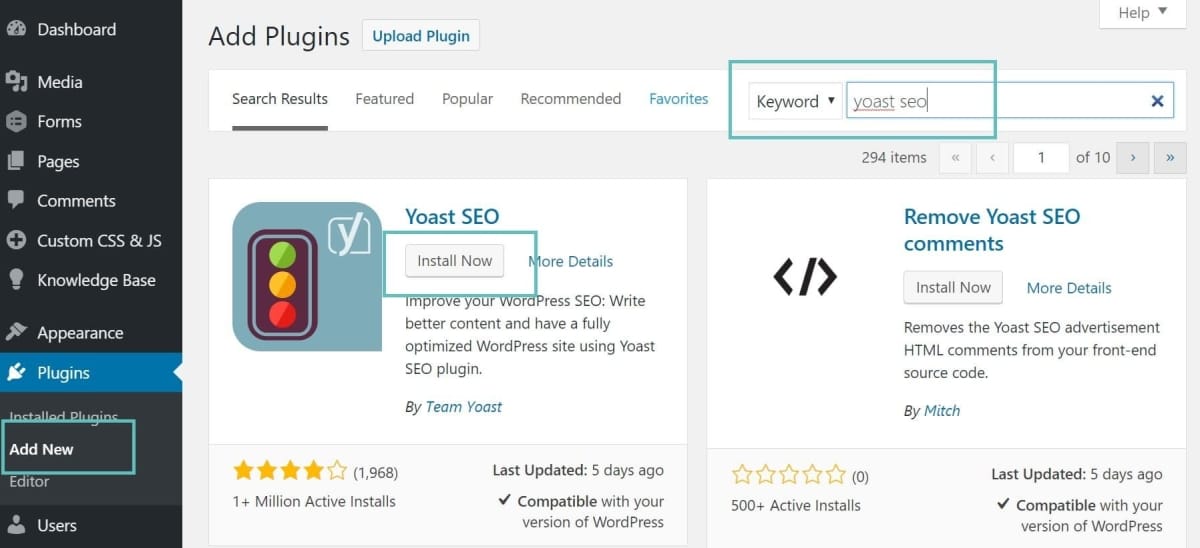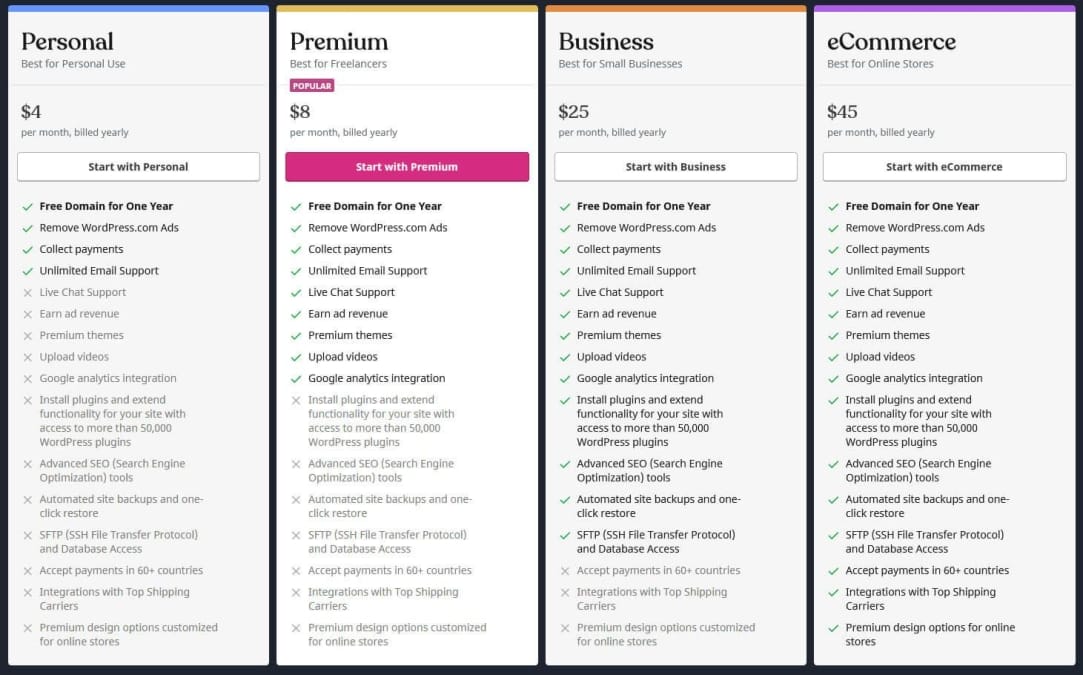When you think about building a website, thereS a good chance WordPress pops into your mind. It’s like the Swiss Army knife of the internet, versatile and user-kind, making it a go-to tool for everyone from bloggers to big businesses. But have you ever wondered who created this powerhouse platform? In this article, we’ll take a closer look at the mind behind WordPress. Spoiler alert: it’s a story packed with creativity, challenges, and a vision that changed the digital landscape forever. So, let’s dive in and meet the person whose ideas helped shape the way we share information online!
Table of Contents
- The Journey of Matt Mullenweg: From Blogging to a global Platform
- The Birth of WordPress: How a Simple Idea Changed the Web
- Behind the Code: The Team and Community That Built WordPress
- Innovations and Features: What Makes WordPress Stand out
- Looking Ahead: The Future of WordPress and Its Impact on the Digital Landscape
- Q&A
- In Summary

The Journey of Matt Mullenweg: From blogging to a Global Platform
Matt Mullenweg’s story is one of the classic Silicon Valley tales, starting from a simple idea and transforming it into something that countless people use every day. Back in 2003, Matt was just a college kid who was passionate about blogging. He jumped into the open-source community, and with a handful of buddies, he set out to create a platform that would make sharing thoughts online easy for everyone. The name of that platform? WordPress. Who knew that this little project would grow into a powerhouse that now powers over 40% of the internet?
At the heart of Matt’s journey was the belief that the web should be an open place, where anyone could express themselves without those pesky barriers. He wanted to build a tool that was not just easy to use but also customizable for anyone from hobbyists to professional developers. his vision lead to features that allowed users to create stunning blogs, build websites, and even launch e-commerce stores—all with just a few clicks. WordPress became a game-changer in the blogging world.
As WordPress gained traction, Matt made some savvy moves to keep the momentum going. He co-founded a company called Automattic, which not only supported WordPress advancement but also introduced new services like Jetpack and WooCommerce. It wasn’t just about coding for him; it was about building a community. Matt traveled to meet users and developers, sharing ideas and soaking up feedback, which made WordPress a collaborative effort. His approach created a sense of belonging and a vibrant, engaged community.
Today, when people think of blogging and website building, WordPress is often the first name that pops into their heads. From personal blogs to major corporate websites, it’s a tool that has stood the test of time. Matt Mullenweg’s journey is a solid reminder of how a simple idea, a lot of hard work, and a community of passionate users can lead to something remarkable. He’s more than just the guy behind WordPress; he’s a pivotal figure in making the internet a place where everyone can have a voice.

The Birth of WordPress: How a Simple Idea Changed the Web
back in 2003, a couple of tech-savvy folks recognized that creating a website didn’t have to be rocket science. They were frustrated with existing blogging tools that didn’t quite cut it, so they came up with a simple idea: why not build something that was user-friendly and flexible? This idea sparked the birth of WordPress, which would eventually change the way millions of people share ideas, showcase their work, and connect with others online.
Leading the charge was Matt Mullenweg, a young developer with a knack for coding. He teamed up with Mike Little, and together they transformed a simple blogging theme into a robust Content Management System (CMS). What started as a basic tool for writing blogs quickly evolved into something that could host entire websites, e-commerce stores, and anything in between. They just wanted to make it easier for regular folks to jump online and express themselves.
What made WordPress truly revolutionary was its commitment to keeping things open-source. This meant anyone could contribute to its growth. Developers from around the world jumped on board, crafting plugins and themes that turned WordPress into this adaptable powerhouse.Suddenly, the web wasn’t just a place for techies or corporations; it became accessible to artists, small business owners, and even hobbyists who wanted a slice of the online pie.
Through the years, WordPress kept getting better. With every update, it embraced new technologies and design trends, while still sticking to its roots of simplicity. This adaptability allowed it to dominate the web, powering over 40% of all websites today. All from that simple idea of making online publishing easy for everyone, WordPress showed that you don’t need fancy skills to get your voice out there.

Behind the Code: The Team and Community That Built WordPress
When you think about WordPress, it’s hard not to talk about its creator, Matt Mullenweg. He started this project back in 2003, along with mike Little. What’s truly awesome is how a couple of passionate developers built such a big platform from scratch.Matt and Mike didn’t just want to create a blogging tool; they aimed to empower people to share their thoughts online. They drew inspiration from b2/cafelog, which was the blog software they used and looped in the community to help shape what WordPress would eventually become.
The beauty of WordPress lies not just in its code but in the incredible community that surrounds it. Developers, designers, content creators, and just everyday users have all come together to make it what it is today. Thanks to thousands of volunteers, wordpress constantly evolves and adapts to the changing web.It’s like one big, happy family working together to create something amazing. Without that collaboration,who knows where WordPress would be right now?
Over the years,what really sets WordPress apart is how it invites contributions. It’s an open-source platform, which allows anyone to jump in and help out.Whether you’re a coder looking to fix bugs, a designer with fresh ideas, or someone who can help translate the software into different languages, there’s a spot for you. The community thrives on diversity and creativity, making WordPress a reflection of all the different voices that contribute to it.
| Contribution Type | Description |
|---|---|
| Code development | Fixing bugs,adding features,and improving functionality. |
| Design | Creating themes, plugins, and improving user experience. |
| Translation | Making WordPress accessible by translating it into multiple languages. |
| Support | helping users troubleshoot issues and learn more about WordPress. |

innovations and Features: What Makes WordPress Stand Out
WordPress really knows how to keep things fresh with its constant stream of innovations and features. One of its standout aspects is the incredible customizability. Users can pick from thousands of themes and plugins,allowing them to create a site that perfectly matches their vision. Whether you’re setting up a personal blog or a full-fledged e-commerce site, there’s a solution just waiting for you to snap it up!
Another big plus for WordPress is the user-friendly interface. even if you’re not super tech-savvy, you’ll find it pretty easy to get started. The dashboard is straightforward, making it simple to add posts, pages, and media without needing a PhD in computer science. Plus, with the Gutenberg editor, content creation is a breeze with its drag-and-drop functionality that lets you rearrange blocks of text and images just how you like them.
Let’s not forget about community support! WordPress boasts a huge, active community that provides tons of resources. Whether it’s through forums, blogs, or local meetups, you can find help or connect with others who share your passion for building websites. Plus, it’s super reassuring to know that there are many developers out there creating fantastic plugins and updates, ensuring that security and functionality are always top priority.
we can’t overlook the SEO tools wordpress has in its corner. With built-in features and powerful plugins like Yoast SEO, you can easily optimize your content to rank better on search engines. The platform gives you all the tools needed to edit metadata, create sitemaps, and more—putting your site on the radar of potential visitors without needing to be an SEO whiz. Here’s a quick overview:
| Feature | Description |
|---|---|
| Custom Themes | Thousands of options to choose from. |
| Plugins | Add functionalities with just a click! |
| User Interface | Simple and intuitive for all users. |
| SEO Tools | Enhance search engine visibility easily. |

Looking Ahead: The Future of WordPress and Its Impact on the Digital Landscape
As we look forward, it’s clear that WordPress isn’t just standing still. With new trends popping up every day,the platform is evolving to better meet the needs of its users.We’re seeing more focus on block editing, which makes building websites easier and more intuitive. This shift is all about giving creators the power to design layouts just how they want them without needing to mess with complex coding. It’s a total game changer for bloggers,businesses,and anyone looking to have a strong online presence.
Another area where WordPress is moving is towards enhanced security. with cyber threats on the rise, keeping our sites safe is a top priority. The WordPress team is constantly rolling out updates and patches to protect users. This includes making it easier to implement HTTPS,two-factor authentication,and other security measures. the goal is to make sure everyone can focus on creating grate content without worrying too much about whether their site is at risk.
In terms of integrations, WordPress is also stepping up. More plugins and tools are becoming available that connect seamlessly with social media,e-commerce,and analytics platforms. Some key partnerships on the horizon may include:
| Integration | Benefit |
|---|---|
| eCommerce Tools | Boost sales with easy shopping features |
| SEO Plugins | Improve site visibility and rankings |
| Social Media Connect | Expand audience reach effortlessly |
Lastly, we’re likely to see even more community involvement in the development of WordPress. Users are going to have a louder voice in shaping the platform. Contributions from developers and non-techies alike could lead to exciting new features that really reflect the desires of the WordPress community as a whole. This grassroots approach not only fosters innovation but also makes the platform feel more inclusive and collaborative.As we move forward, it’ll be fascinating to see how these changes will benefit everyone who relies on wordpress to share their voice and ideas online.
Q&A
Q&A: Meet the Mind Behind WordPress: Who Created It?
Q: So, who actually created WordPress?
A: WordPress was born in 2003, thanks to a guy named matt mullenweg. He was just a 19-year-old kid back then, and he teamed up with Mike Little to create what we now know as one of the most popular content management systems out there.
Q: What made Matt want to create WordPress in the first place?
A: Great question! Matt was all about blogging, but he thought the existing tools weren’t cutting it. He wanted something more user-friendly and flexible. So, he took matters into his own hands and saeid, “Why not build my own?”
Q: Were there any challenges when he started out?
A: For sure! Starting anything from scratch comes with its hurdles. Back in the day, the web landscape was a bit different, and he had to figure out how to make things work really smoothly. Getting people on board and convincing them to switch from other platforms was no walk in the park either.
Q: How did WordPress grow from a small project to what it is today?
A: It grew mostly through word of mouth and a super active community. Matt really believed in the idea of open-source software, letting everyone contribute, share, and improve it. This helped WordPress gain traction, and it quickly evolved into a versatile platform that could be used for anything from personal blogs to massive corporate websites.
Q: What keeps Matt involved with WordPress after all these years?
A: Passion! Matt still loves what he does. He’s heavily involved in the WordPress community and is always looking for ways to make it better. Plus, there’s the thrill of creating something that millions of people use. That’s gotta feel pretty awesome!
Q: Is there anything important about WordPress’s future?
A: Absolutely! WordPress is continually evolving. With the rise of new technologies and trends, like the push for more mobile-friendly sites and improved security, it’s always adapting. Matt’s vision for an open and accessible web means we can expect WordPress to stay relevant and innovative for years to come.
Q: What can someone do if they want to learn more about using WordPress?
A: There’s a ton of resources out there! You can check out the official WordPress website, dive into forums, or even catch some tutorials on platforms like YouTube. The community is super friendly, so don’t hesitate to ask for help!
Q: Any final thoughts on Matt and WordPress?
A: Just that it’s pretty cool to see how one person’s idea transformed the way we approach web publishing. Matt Mullenweg’s journey with WordPress shows how a simple passion project can turn into something that affects millions of lives and businesses worldwide. It’s a reminder that sometimes, you just need to go for it!
In Summary
As we wrap up this deep dive into the story of WordPress and its creator, it’s clear that Matt Mullenweg is more than just a name behind the platform; he’s a real game changer in the tech world. From a simple blogging tool to the powerhouse that powers over a third of the internet, WordPress has come a long way since its inception. It’s a testament to passion, innovation, and the idea that anyone can share their voice online. So, the next time you fire up your blog or navigate through your favorite website, remember there’s a human story behind that familiar dashboard. Here’s to the creativity that fuels the web and to Matt for making it possible! Thanks for reading, and we hope you feel inspired to explore what you can create next.






